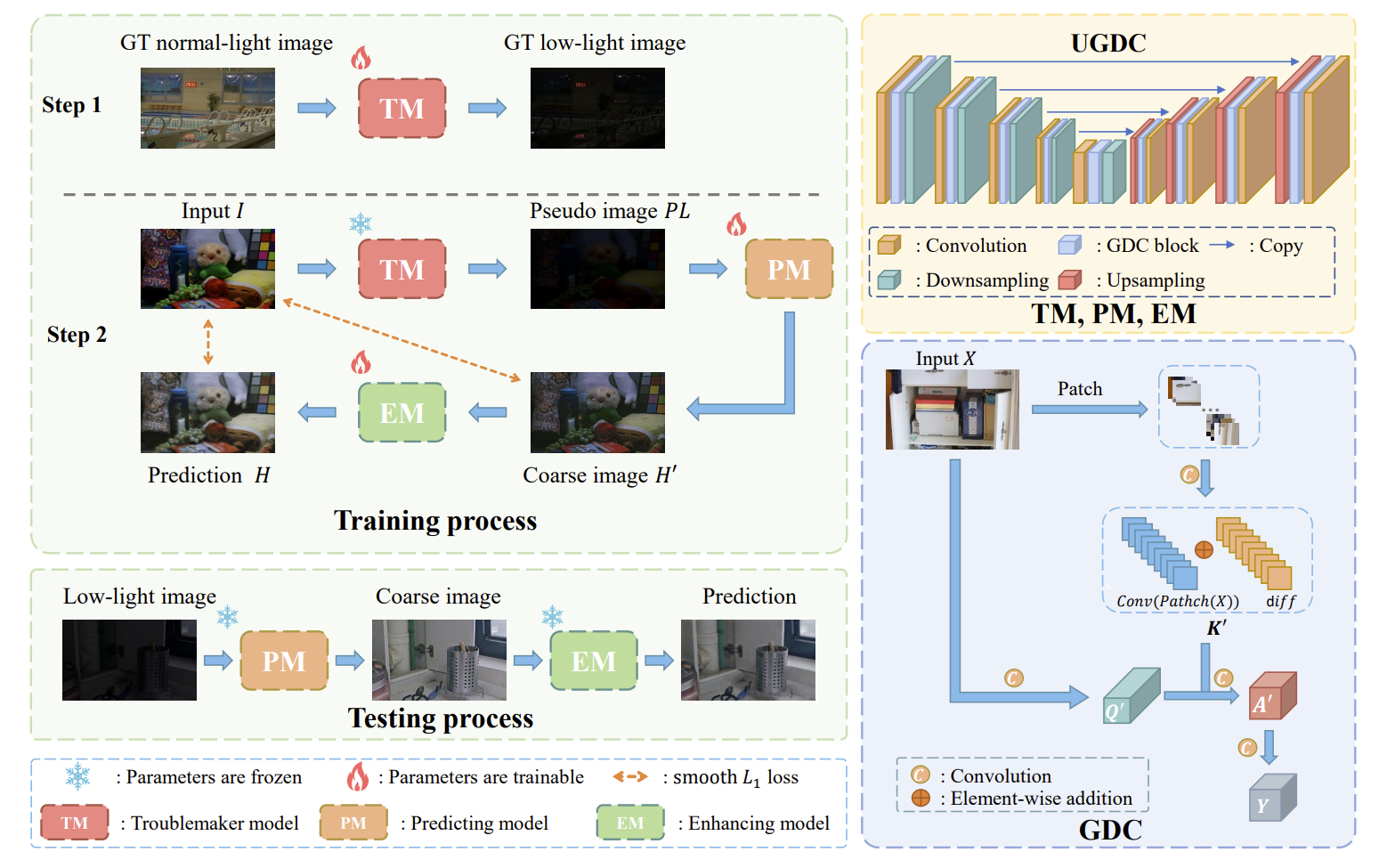Troublemaker Learning for Low-Light Image Enhancement
Low-light image enhancement (LLIE) restores the color and brightness of underexposed images. Supervised methods suffer from high costs in collecting low/normal-light image pairs. Unsupervised methods invest substantial effort in crafting complex loss functions. We address these two challenges through the proposed TroubleMaker Learning (TML) strategy, which employs normal-light images as inputs for training. TML is simple: we first dim the input and then increase its brightness. TML is based on two core components. First, the troublemaker model (TM) constructs pseudo low-light images from normal images to relieve the cost of pairwise data. Second, the predicting model (PM) enhances the brightness of pseudo low-light images. Additionally, we incorporate an enhancing model (EM) to further improve the visual performance of PM outputs. Moreover, in LLIE tasks, characterizing global element correlations is important because more information on the same object can be captured. CNN cannot achieve this well, and self-attention has high time complexity. Accordingly, we propose Global Dynamic Convolution (GDC) with O(n) time complexity, which essentially imitates the partial calculation process of self-attention to formulate elementwise correlations. Based on the GDC module, we build the UGDC model. Extensive quantitative and qualitative experiments demonstrate that UGDC trained with TML can achieve competitive performance against state-of-the-art approaches on public datasets. The code is available at https://github.com/Rainbowman0/TML_LLIE.
PDF Abstract



 LOL
LOL